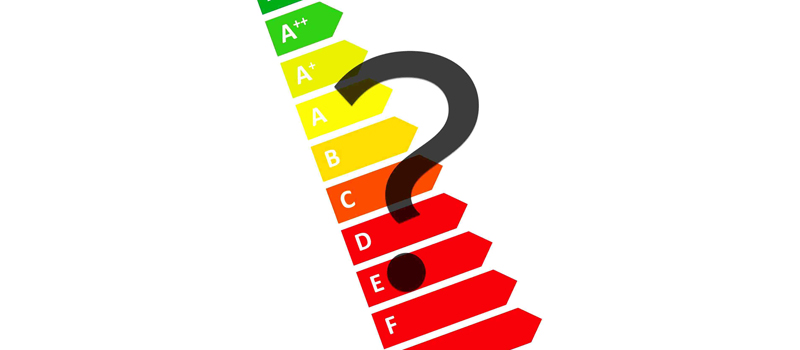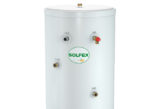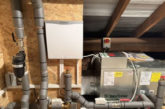
Much has been made of the introduction in September of the ErP Directive, but how much of an impact will it really have on your day-to-day work?
The EU hasn’t felt particularly harmonious of late. As dysfunctional groups go, we’ve not really seen discontent like it since the heyday of Oasis – but that doesn’t mean the legislative juggernaut has ground to a halt. On the contrary, it has finally rolled into town to deliver the much-vaunted ErP Directive.
The regulations
In a nutshell, the directive is designed to assist in cutting carbon emissions, as well as reducing energy bills. The ErP regs cover minimum performance standards for boilers (including combis), water heaters and other heating appliances up to 400kW. The requirements for energy labelling cover boilers (again, including combis) water heaters and other heating products up to 70kW and hot water cylinders with capacities under 2,000 litres.
The labels
The labels themselves will have a familiar look to them, as they are broadly similar to those that have appeared on sundry domestic appliances for a few years. They also bear a striking resemblance to SEDBUK labels.
The responsibility
The good news is that an appropriate label will be despatched with any appliance that falls under the scope of the new rules. In this case, there is no onus on the installer to do anything. So far, so good. However, if you fit a boiler in conjunction with new controls, for instance, the work begins. A label will need to be created for the system, which should then be left with the homeowner. If the package is supplied under one part number by your merchant, the responsibility for the label lies with them. If you have bought the items under separate part numbers, however, it will be down to you to calculate the final system efficiency using the figures on the product fiche and subsequently provide the label to your customer.
The calculation
Each individual product is supplied with a fiche but if you’re working on a job where you’re required to provide the final system efficiency, then the calculation is down to you. Fortunately, it shouldn’t be quite as onerous as it sounds. Manufacturers will be offering online calculation tools which generate a printable label to take some of the legwork out of the task. Yes, there’s more admin involved on your part, but the upside is that you can demonstrate the energy savings to your customers easily through the labels.
The timing
September 26th is the key date. This is when the regs kick in. However, if you have purchased products before that date (or if your merchant can demonstrate that they were already “on the market” before the 26th) you can still fit them. After the cut-off date, all products that enter the supply chain from manufacturers must be ErP compliant.
The impact
We asked a few of the industry’s key players to give us their views on the new rules will impact on installers:
Mark Derbyshire, Vaillant: “We believe the new ErP Directive will open up new business opportunities to installers and help strengthen their relationships with customers and manufacturers alike. By fully embracing this industry changing move, everyone working in the industry will become involved in a product’s life cycle. From the design stages to installation and replacement, the directive will help create a greater sense of unity across the sector.
“By adopting a working partnership approach with suppliers, installers can maximise the ErP opportunity by staying abreast of the latest technological developments in energy efficient products, helping them to quickly identify the right solutions to meet their customers’ varying needs. In doing so, they can reposition themselves as an energy expert to whom customers can turn to, whether they’re looking to upgrade systems – perhaps with the addition of renewable technology – or even when they require effective energy saving advice.
“At Vaillant, we’ve launched a programme of activity to help installers deliver on ErP, from enhancing our ecoTEC boiler range with the addition of ErP rated pumps, to an online software calculator to assist in calculating system labels. In addition, we’ve designed a series of training courses to not only aid installers in dealing with the new ErP and Energy Labelling, but to offer regular refreshers to maximise their knowledge and skills.”
Kelvin Stevens, Adey: “Although ErP is a call to action for the industry, it’s actually a very consumer friendly piece of legislation which means installers shouldn’t be put off from using it as a conversation-opener about ongoing protection. Homeowners are already familiar with the rating system, having seen it applied to white goods for a number of years. This provides an easy way in for installers looking to reinforce the message about the importance of regular, planned maintenance.”
Martyn Bridges, Worcester, Bosch Group: “Having spoken to a number of installers ahead of the ErP Directive’s introduction, one of the most common concerns is how it will impact on the ever-growing pile of paperwork they are required to complete. With the Benchmark Checklist, Competent Persons Certification, and warranty registration card, the thought of having more forms to fill in has understandably put some on the back foot.
“With that being said, heart should be taken from the fact that manufacturers including Worcester are making strides towards streamlining this process to the point where completion of the necessary paperwork will be made much simpler to avoid any duplication.
“The description of the label itself has also caused a degree of confusion, as many remain unaware that an ErP label doesn’t need to physically be fixed to an appliance once the installation is complete. Much like an Energy Performance Certificate, the idea is that the homeowner is left with either an appliance or system label in whichever format is the most appropriate for them. As long as the label is kept safe and is easily accessible at a later date, a printed or emailed copy is just as acceptable.”
Jeff House, Baxi: “The main impact that the ErP Directive will have on installers will be the requirement to create an overall efficiency rating and a customised package energy label if a number of components are fitted as a system at the same time.
“For the purpose of ErP, a space heating package will include one or more space or combi heaters combined with one or more temperature control/s and/or one or more solar device/s. The inclusion of a hot water storage tank does not prevent a package meeting this definition. The different components of the package don’t need to come from the same supplier and there is no need to take pre-existing components into account.
“In most cases the installer will undertake the necessary calculations and generate the package label, as whoever supplies the package to the end user and processes the transaction (known as the ‘Dealer’ within the Directive) is responsible for this activity.
“It will involve completing a part-filled label provided by the manufacturer and should take only about 10 minutes. The information required will be readily available within the technical documents for each product, but Baxi will provide the necessary tools required to make it easy – such as calculation documents and online calculation tools, training and advice.”












